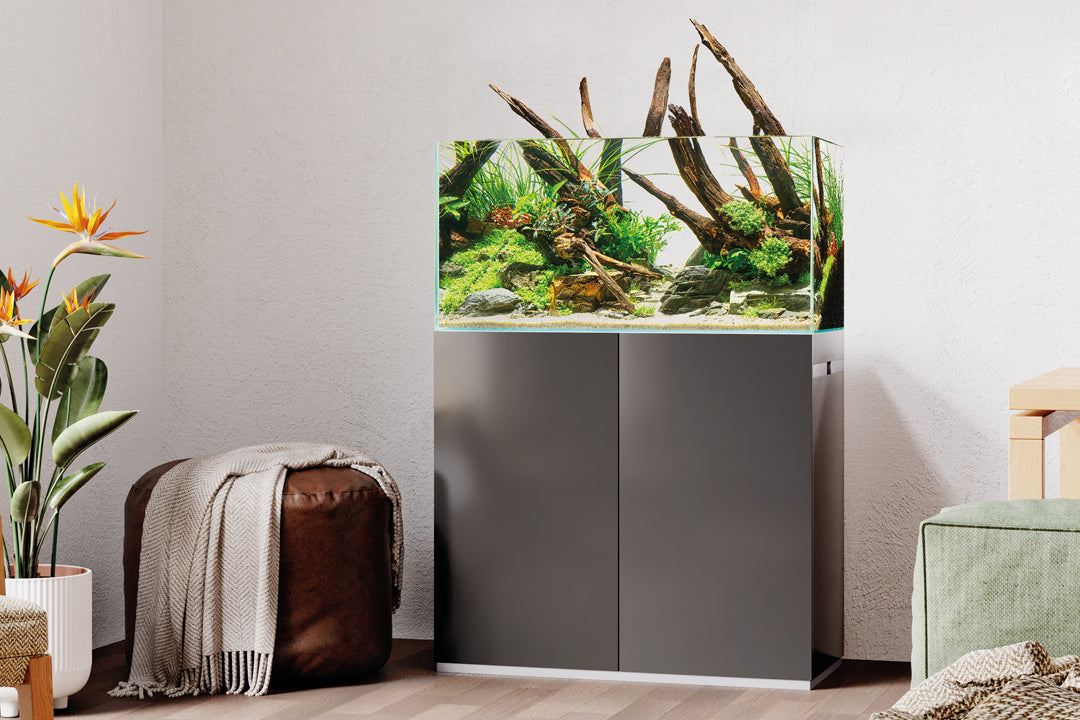Now that you have your aquarium plan laid out and ready to go, it is time to start building.
- Start with rinsing out your aquarium with freshwater - this will help remove any dust, particles, or chemical residues.
- You can also rinse plants and decor if needed. Always follow the directions provided with your plants, rocks and decor. We recommend you learn about the specific needs of your aquatic plants from your local fish store.
- Place your aquarium and base in the predetermined location. Once you start to fill the aquarium, it will be difficult to move.
- Next, lay the aquarium substrate. This base layer depends on what plants and fish you plan on putting in your aquarium. Consult your local fish store about what type of substrate is best for your aquarium.
- Install your aquarium equipment following the instructions found in each of the product manuals. Do NOT plug in any equipment yet.
- At this time you can position heavier decor and planted decor inside the aquarium before filling.
- Next, carefully fill 1/3 of the aquarium with water. In order to not stir up any of the substrate, consider using a slow flow of water and run through a mesh or other tool to restrict an aggressive flow.
- Now, add any driftwood, rocks, decor, and aquatic plants.
- Add the rest of the water. You will want to leave a small distance between your waterline and the top of the tank.
- Finally, plug in the equipment following the instructions found in each of the product manuals
Before adding fish
- Read our Fish & Plants article for more information before selecting aquarium inhabitants and plants.
- You need to allow the water to cycle to a point microorganisms have settled to balance the natural nitrogen cycle. Typically, this process takes about three weeks.
- You will need to test the water to determine if any water treatments are needed to create the ideal environment for the fish you have chosen.
- It is also important that the fish population is slowly increased.

